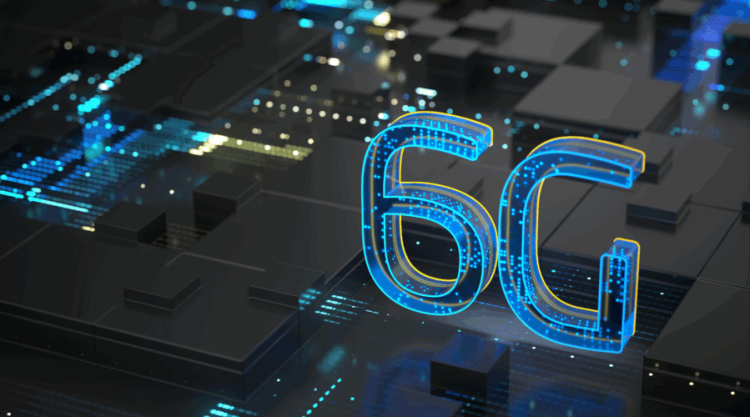Introduction
As the world transitions to the ultra-fast speeds and hyper-connectivity of 5G, the next generation of wireless technology, 6G, is already on the horizon. With 5G still in the early stages of global deployment, 6G promises to push the boundaries of what is possible in terms of data speeds, network efficiency, and intelligent connectivity. Although 6G is expected to become mainstream around 2030, the early stages of this technology are already being explored, and several preliminary applications are projected to emerge over the next decade.
In this article, we will delve into the anticipated features of 6G, explore the potential early applications of this technology, and assess its impact on key industries, society, and the global economy. We will also consider the challenges that must be overcome before 6G becomes fully integrated into the fabric of our digital lives.
1. What is 6G? An Overview of the Next-Generation Wireless Technology
1.1 Defining 6G Technology
6G represents the sixth generation of wireless technology, following the rollout of 5G networks. As with previous generations, 6G will enhance wireless communication capabilities, but it will go far beyond the speeds, latency, and connectivity improvements brought by 5G. Early research indicates that 6G will offer:
- Terabit-per-second (Tbps) speeds: While 5G can support speeds up to 10 Gbps, 6G will enable speeds up to 100 times faster, reaching 1 Tbps. This will allow for instantaneous data transfer of ultra-high-definition content, including holograms and AI-driven simulations.
- Ultra-low latency: Building on 5G’s low-latency capabilities, 6G aims for latency times as low as 1 millisecond, making real-time communications even more seamless.
- Ubiquitous connectivity: 6G will aim to provide connectivity not just in urban areas but in remote locations, including deep oceans, deserts, and outer space, through satellite communication and integrated network systems.
- AI-powered networks: Unlike 5G, which relies on human intervention for network management, 6G will likely be powered by artificial intelligence (AI) to optimize networks autonomously, ensuring peak performance and efficiency.
1.2 Key Technologies Underpinning 6G
Several advanced technologies will form the foundation of 6G networks. These include:
- Terahertz (THz) Spectrum: 6G will rely on frequencies in the terahertz spectrum, allowing for the massive increase in data transfer speeds necessary to achieve 1 Tbps.
- AI and Machine Learning: AI will play a central role in optimizing network management, troubleshooting, and improving user experiences in real-time, ensuring autonomous operation of 6G networks.
- Quantum Communication: 6G may leverage quantum computing and quantum encryption to enable ultra-secure data transmission, overcoming the vulnerabilities present in current encryption methods.
- Integrated Satellite Systems: 6G will likely combine terrestrial and satellite networks to provide global connectivity without relying solely on ground-based infrastructure.
These technologies will not only make 6G faster and more reliable but also fundamentally change how we interact with the internet and the devices around us.

2. Early Applications of 6G: What to Expect by 2030
2.1 Holographic Communication: A New Era of Digital Interaction
One of the most exciting applications of 6G is the ability to support holographic communication. With 6G’s ultra-high speeds and low latency, users will be able to participate in real-time, 3D holographic calls. This could transform personal communication, business meetings, and social interactions in several ways:
- Holographic conferencing: Instead of video calls, people could interact in 3D holographic meetings, allowing for a more lifelike experience of remote communication.
- Virtual presence: Remote workers or attendees of conferences could be represented as holograms, allowing them to interact with physical spaces in real-time.
- Entertainment and media: Artists, musicians, and entertainers could deliver performances in 3D holographic formats, providing an immersive experience for audiences.
The ability to interact with holograms will likely be one of the first 6G applications to gain traction, significantly changing the way we communicate and engage with digital content.
2.2 Autonomous Systems and Smart Cities: The Integration of AI and IoT
6G’s AI-powered networks will provide the backbone for the continued growth of autonomous systems. By 2030, 6G is expected to support the seamless operation of autonomous vehicles, drones, robotic systems, and smart cities. In a 6G-powered smart city, we can expect:
- Autonomous vehicles: Cars, buses, and trucks will communicate in real-time with each other and with traffic infrastructure, optimizing traffic flow, reducing accidents, and improving the efficiency of transportation systems.
- Robotic services: Drones and robots will be able to deliver goods, inspect infrastructure, and assist in emergency response operations with minimal human intervention, thanks to real-time communication and AI-driven management.
- Urban management: 6G-powered smart cities will integrate real-time data from connected devices to improve everything from traffic management to energy consumption and waste disposal.
By enabling highly efficient, automated urban environments, 6G will help create smarter, safer, and more sustainable cities, transforming how we live, work, and travel.
2.3 Ultra-High Definition Content: Immersive Entertainment with AR/VR
The entertainment industry is set to undergo a transformation with 6G, as the ultra-fast speeds and low latency of 6G networks will make augmented reality (AR) and virtual reality (VR) experiences more immersive and accessible. Some possible 6G entertainment applications include:
- Augmented reality: Users will be able to overlay interactive digital content onto the physical world with minimal latency, creating more realistic and engaging gaming, shopping, and learning experiences.
- Virtual reality: 6G will enable fully immersive VR experiences, allowing for photorealistic, real-time interactions in virtual environments for gaming, education, and professional applications.
- Cloud gaming: 6G’s high speeds will support lag-free cloud gaming, allowing players to access top-tier games without needing expensive hardware.
The ability to stream ultra-high-definition content, such as 8K video and holographic projections, will create a new frontier in entertainment, enabling experiences far beyond what is possible with current technologies.
2.4 Healthcare: Remote Surgery and Real-Time Patient Monitoring
6G will revolutionize healthcare by enabling real-time, remote surgery, and advanced patient monitoring. With its low latency and high-speed capabilities, 6G will allow for:
- Remote surgeries: Surgeons will be able to perform procedures in real-time on patients located anywhere in the world, using robotic surgical tools controlled via high-speed networks.
- Health monitoring: Patients’ vital signs will be transmitted instantly to medical professionals, allowing for constant health monitoring and early detection of issues.
- Telemedicine: Virtual consultations with doctors will become even more reliable, offering high-definition video, real-time diagnostics, and secure data sharing.
In healthcare, 6G’s capabilities will save lives, improve patient outcomes, and reduce healthcare costs through faster and more accurate diagnoses and treatments.
3. Challenges and Considerations for 6G Development
While the potential of 6G is vast, there are several challenges that must be overcome before its early applications can be realized. These challenges include:
3.1 Infrastructure Requirements
To support 6G, new infrastructure must be built, including terahertz spectrum transceivers, satellite communication systems, and edge computing capabilities. This will require significant investments and innovations in wireless technologies, as well as updates to existing network infrastructure.
3.2 Regulatory and Standardization Challenges
As 6G is still in the research phase, international cooperation will be essential to establish unified standards for the technology. Governments, businesses, and international organizations must work together to ensure that 6G networks are deployed in a way that is both secure and efficient.
3.3 Security and Privacy Concerns
With more data being transmitted at greater speeds and across a larger number of connected devices, the security and privacy of personal and corporate information will become an even more pressing issue. Quantum encryption, AI-driven security protocols, and blockchain-based systems will likely be necessary to protect against cyberattacks and data breaches.
4. Conclusion: The Future of 6G
The early applications of 6G technology expected to emerge by 2030 are set to reshape industries and revolutionize the way we interact with technology. From holographic communication to autonomous systems, 6G will enhance the capabilities of the internet of things (IoT), AI, virtual reality, and healthcare, among others.
While significant challenges remain in terms of infrastructure, regulation, and security, the potential benefits of 6G are immense. The journey towards 6G will require global collaboration, technological innovation, and careful consideration of its societal impact. As we approach 2030, the world is poised for a new era of connectivity—one that will make current technologies seem like a distant memory.












































